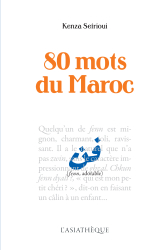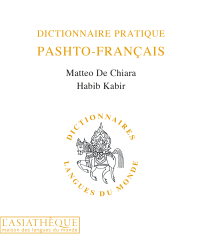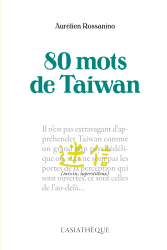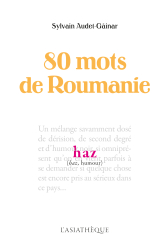Details
Format: Paperback
ISBN: 9782360573325
Collection: Langues INALCO
17 x 24 cm
Weight: 400 gr
Pages: 236
Edition :
2023
First publication: 03/04/1995
Last printing: 03/2023
CLIL: 3821
BISAC: FOR015000
Manuel de coréen (Livre + audio)
(Korean handbook (book and audiorecordings))
The new, updated edition of a reference for learning Korean
The Manuel de coréen (Korean language manual) consists of 17 lessons and provides the essential elements of the Korean language. Each lesson includes an illustrated text, grammatical explanations, vocabulary and translation of the text, and exercises. The answers to the exercises at the end of the book allow for self-study.
The vocabulary is deliberately limited so that the learner can concentrate on acquiring the phonetic and grammatical mechanisms. It starts with deciphering and understanding the forms, and then, with the help of exercises, moves on to mastering structures and phrases.
In Korean, the difference between what is pronounced and what is written has striking similarities with what is observed in French, and this for the same historical reasons. When we speak, we prefer the syllables that are easier to pronounce, but when we write, if we want to preserve the identity of the words, we must adopt a unitary spelling.
The learner will have to listen and re-listen to the recordings - now accessible by QR codes - throughout the book, and read and re-read the lessons until he or she can move without hesitation from a sequence of letters to the pronunciation of the word, and vice versa.
Korean language is the reflection of a thousand year-old civilization and of a very rich and complex culture. It is the language of a country bent under the weight of the past but resolutely turned towards the future. This Korean language manual aims to guide your first steps into this unknown territory. In French we say "the first step is the hardest". Koreans prefer to say "the first steps are already half the journey." (extract from the Preface)
MEDIA LIBRARY
Audio recording
CONTRIBUTORS' BIOGRAPHIES
Shim Seung-Ja
Shim Seung-Ja taught Korean at Institut national des langues et civilisations orientales (Inalco), National Institute of Oriental Languages and Civilizations in Paris (France).
André Fabre

André Fabre, born October 28, 1932 in Perpignan and died in the same city on July 27, 2009 is a French linguist, specialist in Korea, professor at the National Institute of Oriental Languages and Civilizations. A pioneer in Korean studies, he enabled the development of Koreanology in France.
André Fabre is a French linguist, specialist in Korea, professor at the National Institute of Oriental Languages and Civilizations. A pioneer in Korean studies, he enabled the development of Koreanology in France. From 1963, he spent five years in Korea to deepen his knowledge of this country. Upon his return in 1968, he founded the Korean Language Chair at the National Institute of Oriental Languages and Civilizations, which he held until 1998. He also taught at Qyzylorda University in Kazakhstan. He is the author of numerous articles and translations and has lectured on Korea all over the world. Besides Korean, he learned Chinese, Japanese and Russian, which gave him direct access to all sources of Korean history.
TABLE OF CONTENTS
II - ALPHABET CORÉEN
III – LEÇONS
Leçon 1
Dans cette leçon, vous apprendrez à vous présenter et à décrire ce qui vous entoure. Les textes seront d’abord donnés en coréen et en romanisation, l’objectif étant d’essayer de les comprendre. Vous trouverez leur traduction à la fin de la leçon.
Leçon 2
Dans cette leçon, vous apprendrez à utiliser la forme possessive, à l’écrit comme à l’oral. Dans la continuité de la première leçon, vous poursuivrez la description de votre environnement.
Leçon 3
Dans cette leçon, pour développer votre vocabulaire de la description, vous apprendrez à utiliser les pronoms personnels puis vous découvrirez les particularités de l’adjectif en coréen. Enfin vous aborderez la négation.
Leçon 4
Dans cette leçon, vous étudierez les temps et les aspects des verbes et les différents temps à la forme déterminante. Vous verrez aussi quels suffixes marquent le complément d’objet direct.
Leçon 5
Dans cette leçon, vous aborderez le style familier et vous étudierez le temps, l’heure et la durée. Vous ferez aussi connaissance avec quelques expressions.
Leçon 6
Dans cette leçon, vous étudierez l’expression de l’état et celle de la possibilité. On vous présentera une nouvelle catégorie de verbes et d’adjectifs ainsi qu’un autre suffixe verbal jonctif.
Leçon 7
Dans cette leçon, vous aprendrez quels suffixes employer pour marquer la continuité, la direction, l’accompagnement, l’état, le pluriel, la simultanéité, le point d’aboutissement.
Leçon 8
Dans cette leçon, vous découvrirez les nuances de sens de différents suffixes, vous étudierez un nouveau marqueur du locatif et vous retrouverez la construction à thème et à sujet.
Leçon 9
Dans cette leçon vous seront présentés le verbe auxiliaire, ainsi que des suffixes verbaux jonctifs et des adjectifs. Vous étudierez aussi la structure de la proposition enchâssée.
Leçon 10
Dans cette leçon, vous trouverez un tableau des chiffres coréens et sino-coréens et vous étudierez les classificateurs, mots spéciaux qui accompagnent tout ce qui se compte.
Leçon 11
Dans cette leçon, vous étudierez l’expression du moment, de l’intention, de l’impossibilité et de la durée. Vous verrez aussi les valeurs de certains suffixes jonctifs.
Leçon 12
Dans cette leçon, vous ferez connaissance avec des tournures ou des suffixes jonctifs marquant notamment le changement d’action, le retour au point de départ ou encore l’intention non réalisée.
Leçon 13
Dans cette leçon, vous aborderez l’expression de l’honorification, à distinguer de celle de la politesse (elle-même subdivisée en formes « courante » et « décontractée »). Vous étudierez aussi le discours rapporté et l’expression de l’incertitude.
Leçon 14
Dans cette leçon, vous en apprendrez davantage sur l’expression de la politesse et sur le discours rapporté indirect. Vous étudierez de nouvelles tournures.
Leçon 15
Dans cette leçon, vous découvrirez les quatre formes verbales permises dans le discours rapporté indirect et vous étudierez notamment l’expression de la frustration et celle de l’intention.
Leçon 16
Dans cette leçon, vous étudierez le marqueur du datif et celui de la provenance, quatre verbes auxiliaires, des adverbes dérivés, les mots expressifs et d’autres suffixes jonctifs.
Leçon 17
Dans cette leçon, vous étudierez notamment le circonstant temporel, deux verbes auxiliaires, un marqueur de l’indéfini et un verbe honorifique.
IV - CORRIGÉ DES
EXERCICES
V –
LEXIQUE
VI - INDEX
GRAMMATICAL















